
How do you make it at Public Art? How do you become successful in Public Art?
Try, try, try again. In my own public art career, I’m immensely thankful for having 10 years of corporate experience. I learned professional writing, project management, submitting bids, budgets, legal, insurance, and good business practices, none of which I learned in Art School. Art School taught me how make good renders, proposals, preliminary drawings, and more, but it was the combination that got me through it.
In Public Art, you have to be prepared for more rejection than you expect in the conventional art world, and even then, it may take a form you’d never expect.
What is Public Art?
Public Art is a huge subject and you can easily entertain yourself with stories of lies and deceit, just ask Richard Serra about his Titled Arc project, where he set a precedent for artist rights in Public Art. At its best, and something that I believe strongly in, Public Art aims to inspire, educate, and elevate humanity in the public space. Sometimes it hits the target, other times, it misses the planet, but it does provide endless debate in the public forum.
Public art takes patience.
I have had more Public Art success with private enterprise, small foundations, private parks, and individual collectors. Committee politics is a tricky thing, and in my experience, the art you’re presenting must get through committee with little effort. Be prepared that some organizations will not allow you to physically make the actual art, its called ‘leveraged liability’ where the risk factors are spread out to minimize failure. This means, unless its an outright purchase of existing work, then, for a proposed work, the fabrication will be contracted out, the installation contracted out, even marketing can be contracted out, and in the end, the artist will get about 10% of the overall budget to design the project.
If you get better than that, you’re already famous, or you’re probably not working with a civic institution, as towns and cities, can’t afford lawsuits, risk, and embarrassment. Private foundations or individuals can be more flexible and take more risks, which also means, that the artist can earn more by making the art themselves.
I believe in Public Art.
We need more of it. We also need more voices from the margin, we need a different narrative of art making, more voices from minorities, foreigners. disabled people, lgbtq, women, from people of color, bottom line, we need more diversity. We need people like you to apply to these calls. Apply to the calls for art, and change the way our public spaces are experienced.
Example, a two year project…
In late 2020, after I sent a generic artistic inquiry, the Quimper town council’s cultural director asked me if I wanted to present some ideas to their department. I’ve been asked to do these type of things before, so it was exciting, but I knew to be prepared: a good selection of slides, three types of projects to propose, not too much, not too little, but just enough to get the conversation started.
When I told the panel I’d show them 3 projects, the cultural director was bouncing in his chair, saying that there was a fourth, but we’d get to that when I was done. Ok, so there’s a surprise ending, but we have to get through the presentations first.
I showed a plastic pollution project, a wooden monument, and an eco-art living installation, 2 or 3 slides each, all projects that I’d done elsewhere, fully documented and ready prototypes for another project based on their needs, budget, and timeline, which I knew nothing about.
Then came the fourth.
Once upon a time in Brittany, I made a large scale public art project along 2km’s of river in Pont-Aven, for one month in the summer of 2006. Many people talked about it, a fact that I’m only just beginning to find out, and several people thought it was a shame that the project wasn’t installed in more cities, in more locations, at different times of the year, so that more people could have enjoyed it. This was the cultural director’s question, could I do something like my Aven Project in Quimper.
Aven Project, realized 2006, John K. Melvin
Of course, my answer was yes.
This started off a year’s worth of meetings, planning, and discussions, all about how I was going to install translucent panels along 3km of riverway, which was 3 times the scale of what I did in Pont-Aven.
Not all public art projects are the same. However, in most countries I’ve worked in, there is a standard process, the arts committee or city council, sends out a call for artists to submit qualifications or even proposals. Included in their call, is usually a detailed prospectus, complete with budget, timeline, constraints, and concerns.
Quimper thankful.
I wasn’t aware of the council’s budget, they wanted winter-2021, and in the beginning, anything I needed would be supplied. Of course as we progressed, we learned what was possible and what wasn’t. I was thankful to have an open conversation with them about the project. And just so we are clear, they paid me, which I’m very thankful for.
I submitted my designs, and we were off to the next phase. The Directors decided we needed to hire a third party to develop a feasibility study of the project. The contract went to public bid (a milestone for me), and we got a response from a highly reputable art fabricator in the region, BLAM, was selected winter 2021 where we had already delayed into 2022.
In addition to my designs, here’s what I wrote about the project:
>>
Convergence is a site-specific performative installation project along the length of the Odet and Steir in Quimper, France. It will run along the Odet from just after the train station and finish at LocMaria; then, along the Steir, it will run from the parking Providence until the confluence. It will be in place for one month each year for three years.
The project is inspired by the word confluence, and how many people, diverse in experience and origin, converge on Quimper to live, work, and play. Naturally, the sail-like forms are also inspired by the region’s history and culture. The project is composed of custom designed and fabricated fabric panels suspended vertically along the river between the footbridges. The panels are made of a translucent material chosen for its ability to reflect the light and shadow of, the environment, the public, and artificial projections. The panel’s ability to receive cast shadows allows for all spectators to interact with the project universally. The project hopes to inspire the public to consider themes of unity, diversity, individuality, ecology, and community.
>>
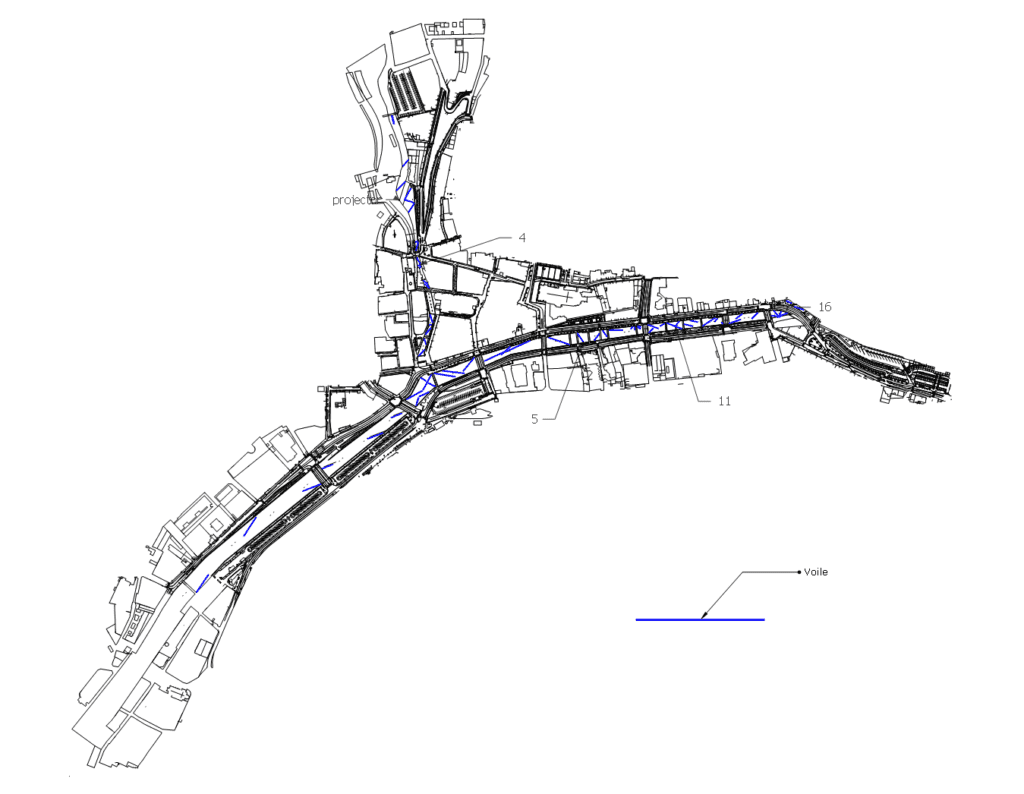
CONVERGENCE, 2021, site map, blue lines = panels, John K. Melvin
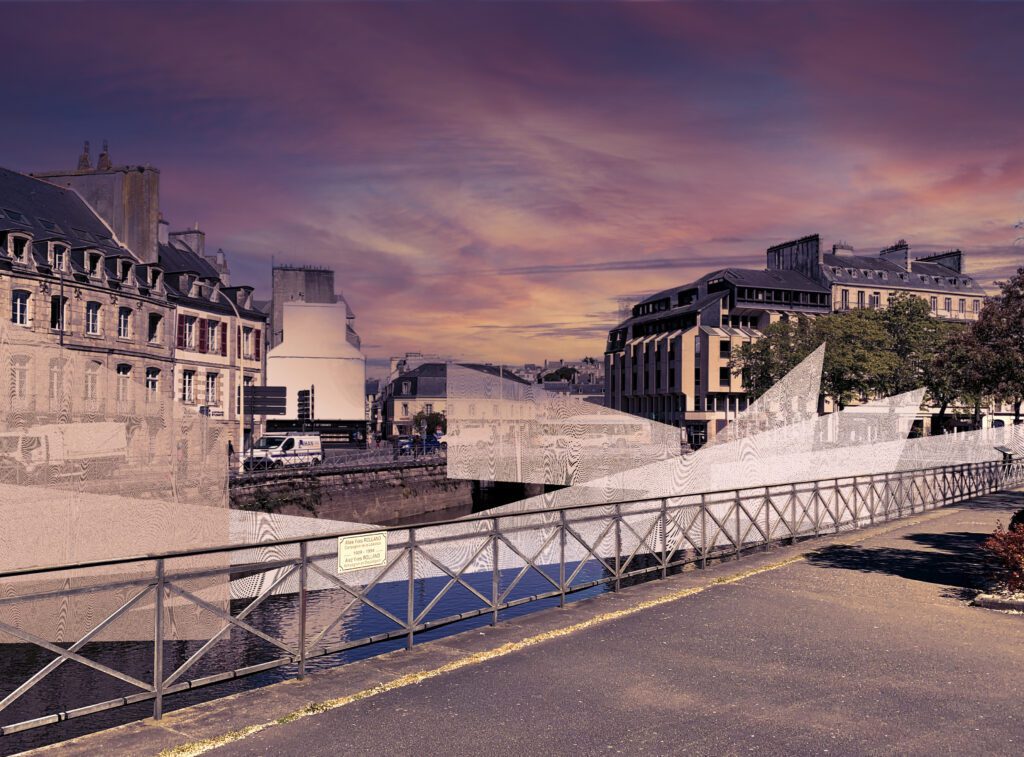
CONVERGENCE, 2021, John K. Melvin
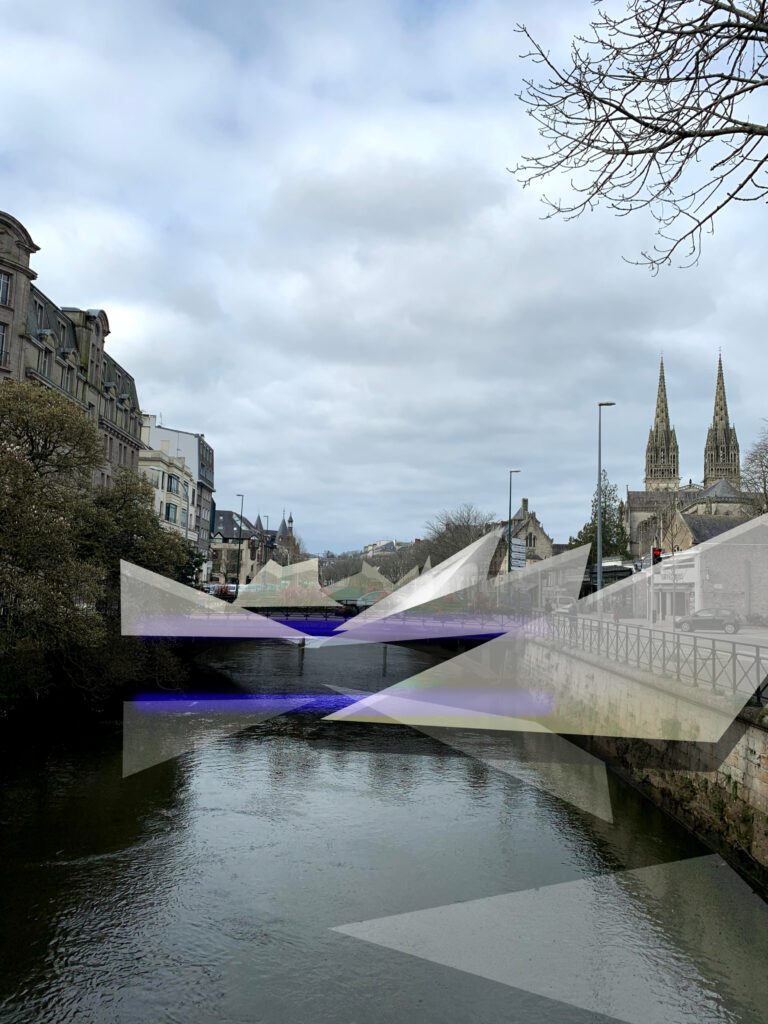
CONVERGENCE, Concept Image, 2021, John K. Melvin
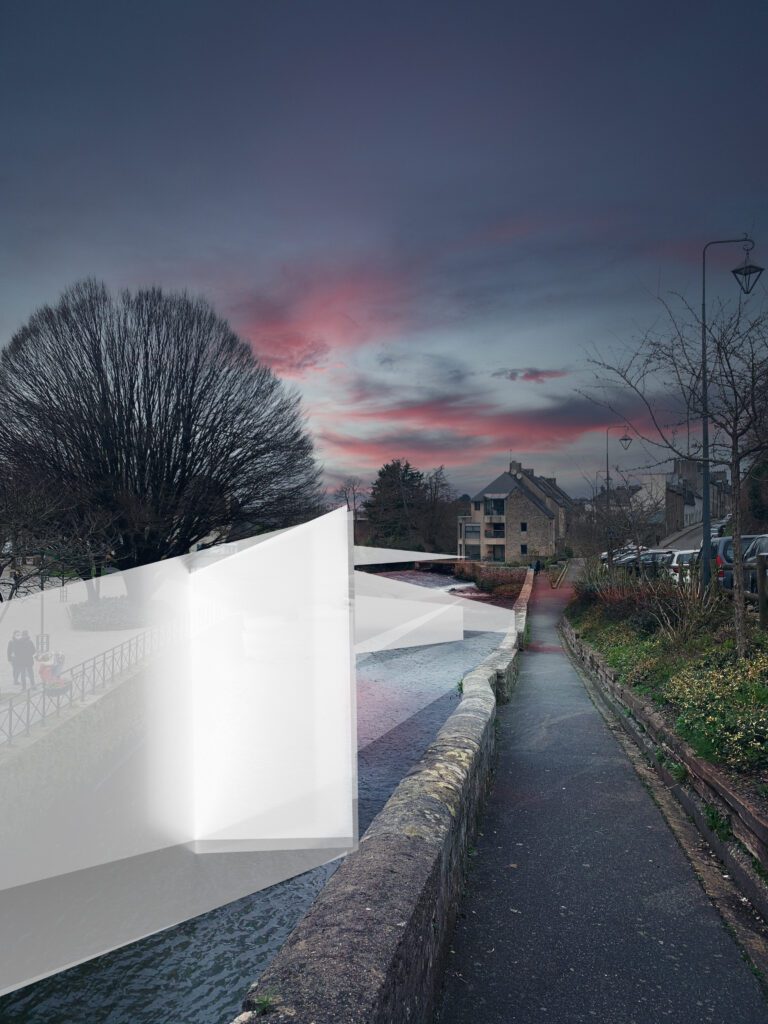
CONVERGENCE, Concept Image, 2021, John K. Melvin
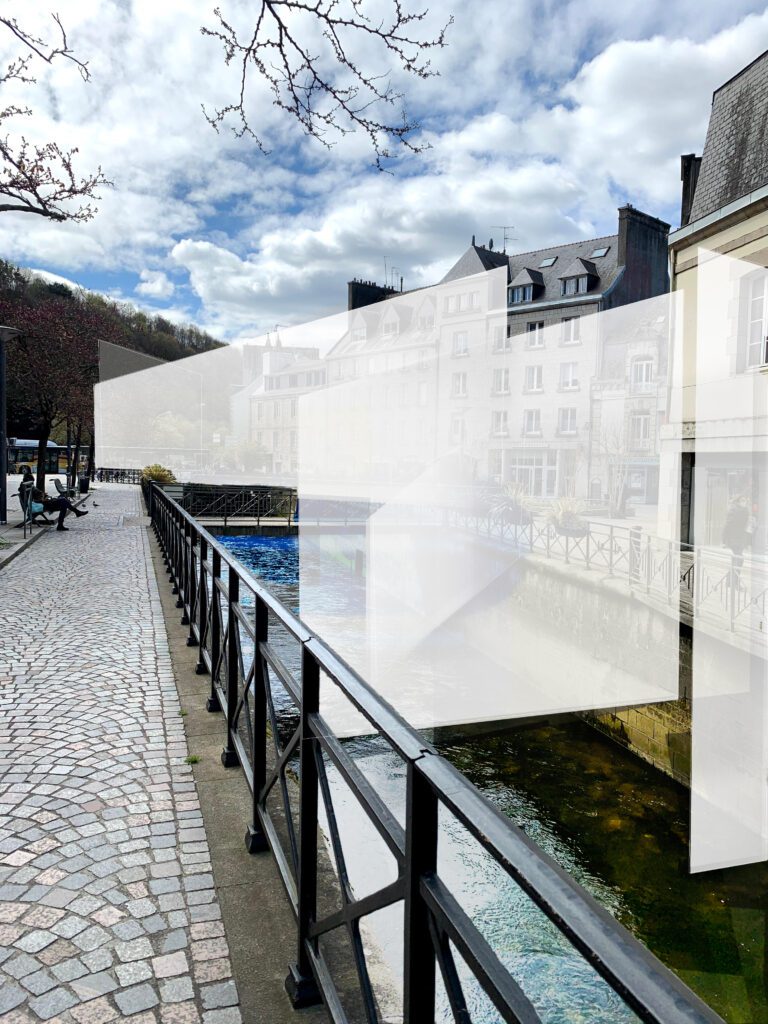
CONVERGENCE, Concept Image, 2021, John K. Melvin
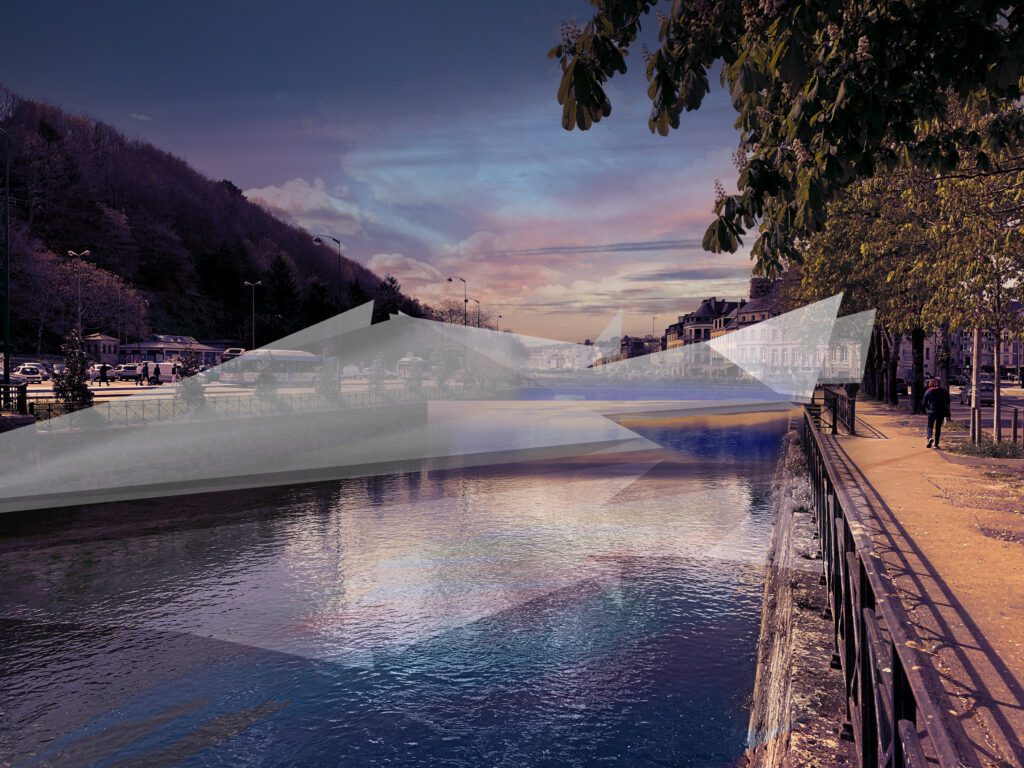
CONVERGENCE, Concept Image, 2021, John K. Melvin
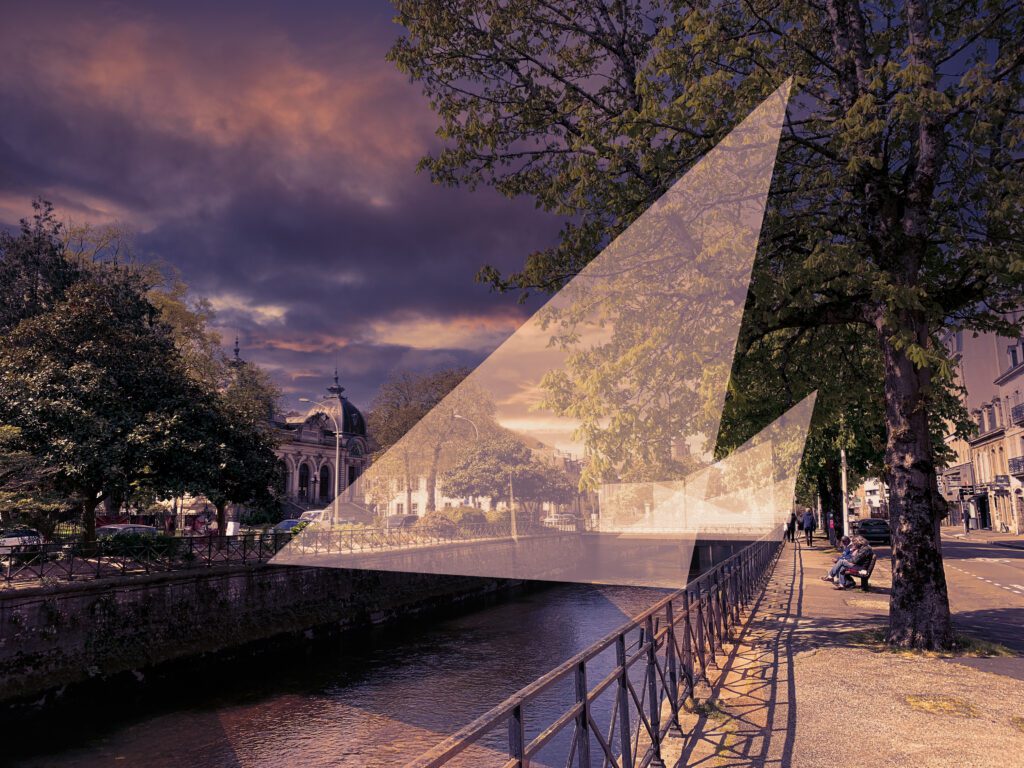
CONVERGENCE, Concept Image, 2021, John K. Melvin
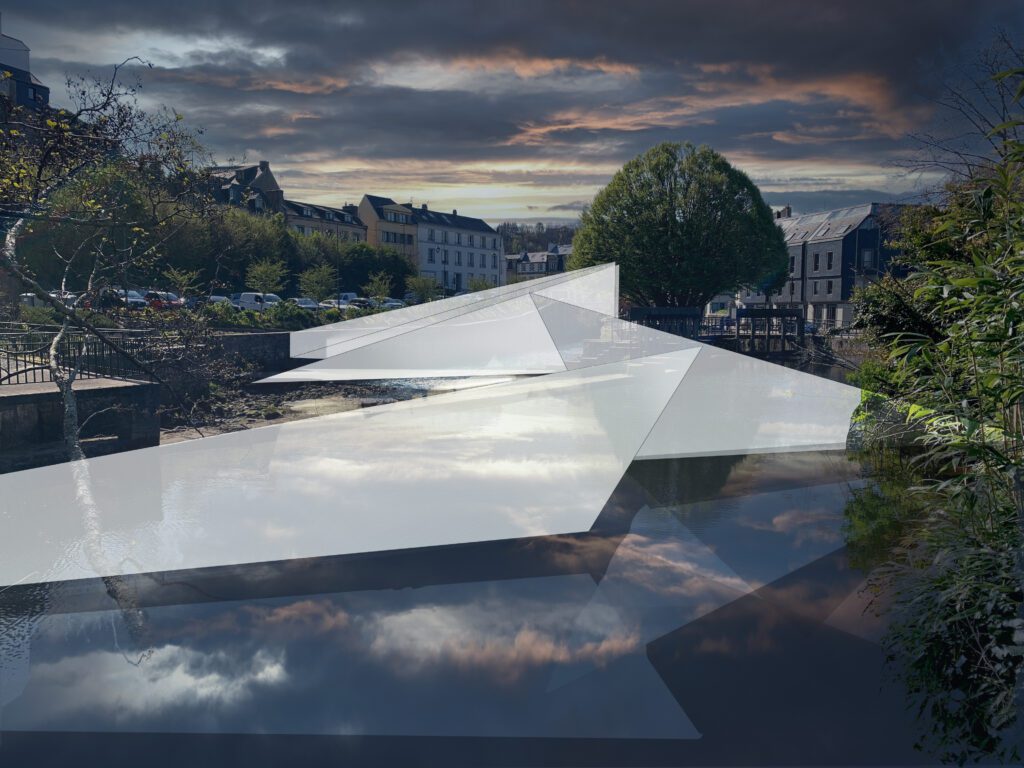
CONVERGENCE, Concept Image, 2021, John K. Melvin
I talked with BLAM once before they finished their report and really hoped to talk with them more, but we never found time. We were both concerned about installing in winter, it rains here and often gets to freezing at night, so the installation could get exponentially heavy quickly. BLAM, gave me a verbal rundown of their feasibility report that they had submitted to the town.
It wasn’t looking good.
Winter was a major culprit in engineering calculations, by a factor of 3. It was too much.
The report was presented to the council without me, and the decision was made to shelve the project indefinitely. No one asked me for a plan b, nor did anyone ask me for engineering solutions. The feasibility report projected a budget three times the amount the town was willing to spend, and that was it, game over. The town paid me to develop a project and then BLAM was paid to determine it wasn’t feasible. I learned all this in spring 2022.
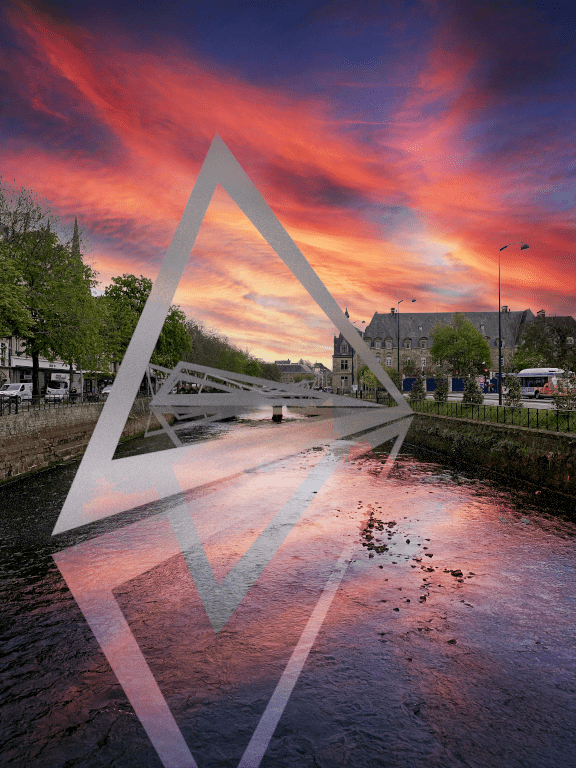
Plan B, CONVERGENCE, 2022, John K. Melvin
Again, the lesson is to be thankful
Quimper taught me a vital lesson, breathe and and be patient. Cities have a lot of responsibility to their citizens personal safety and financial diligence. All these factors were at play in this project. This is also a vital lesson taught to me by John Roloff, a former professor of mine at SFAI, your conceptualizations, developments, writings, drawings, and all other material produced during the development is ‘work’, always keep that in mind (websites, documentation, etc.). The Quimper Convergence Project is shelved perhaps indefinitely, but keeping the conceptual work allows for it to be produced again at a later date.
Wherever you live, be bold.
Most countries have a list server of some kind, take faith, and find it. Log on, create your profile, upload good images of previous works, if you don’t have these things, reach out to friends with gardens, and make public art for their garden, then use those photos to launch your career. Try to apply to as many as you can, every week. Set one day aside and knock out the applications, I used to do 10 a day, 100 a month. If you get your CV, statements, and letters of inquiry in draft form you can copy/paste a lot of information in those applications, streamlining the process.
Here’s what I know; In the States, you have a list server called Call for Entry, here; In the UK, you have the Arts Council, Public Art Online, and also be sure to check in with your local and neighboring councils, as I’ve yet to find a good one pot source for listings; in France, you have BOAMP and Culture.fr, be sure you are fluent in French, and have someone you can talk too about navigating the paperwork, its very, very particular, and would need a whole trilogy of blog posts for a tutorial, I’m only just mastering it; for other countries, the route is similar, town council, cultural council, etc.
Don’t give up, we need your story.
My advice, you can’t fish if you don’t go fishing, set one day a week aside where you can do these applications, don’t get lost in the weeds, set yourself a time limit, a few hours, no more, try to apply to things you think you have an actual chance at. Don’t over-reach, but also, don’t sell yourself short, you’ve got talent, you’re reading this, so do it. More and more committee members and administrates are telling me that they want diversity, and other than famous cities/foundations, many feel like they aren’t getting the submissions, so find your niche, and dig in.
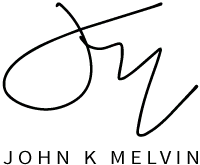
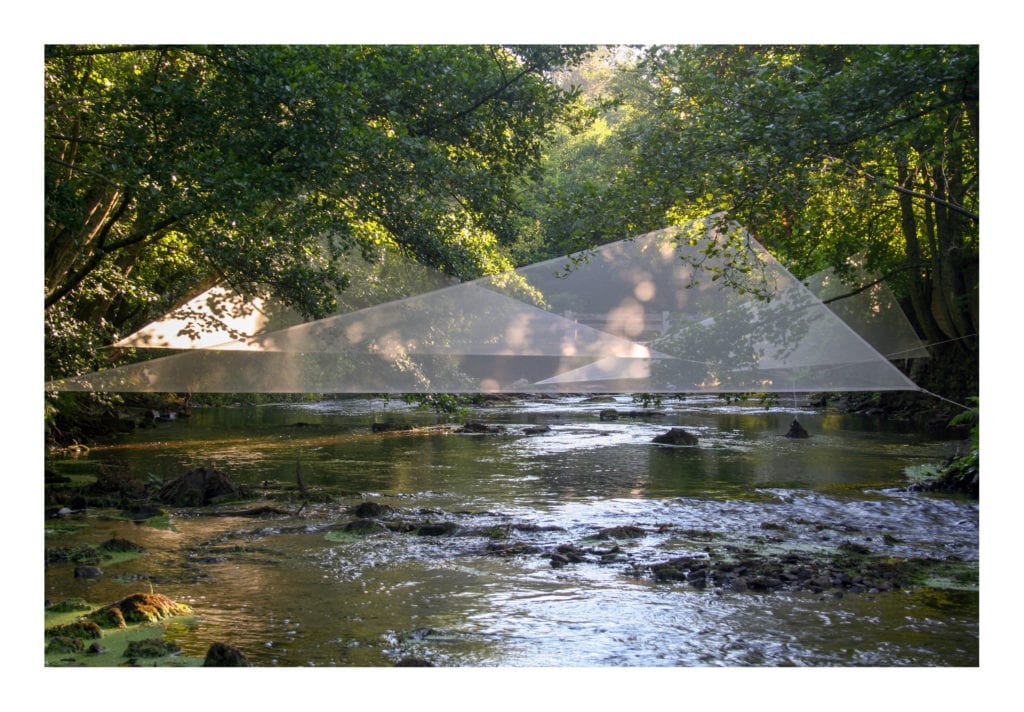
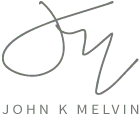
Hey John,
I’m impressed & happy to see all this new work & your website.
When I saw the iterations of Division, I could help but imagine it in different materials, as I’m sure you have … like clear glass or mirrors ?
It also made me think of Richard Deacon’s bolts & rivet pieces … ?
alors, my best to you
Corbin 🙂
thanks Corbin, the same to you.